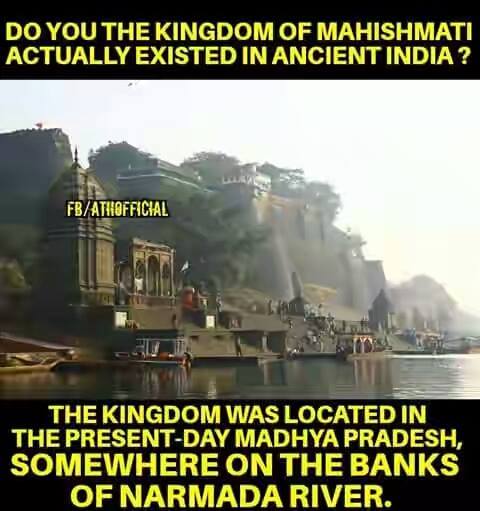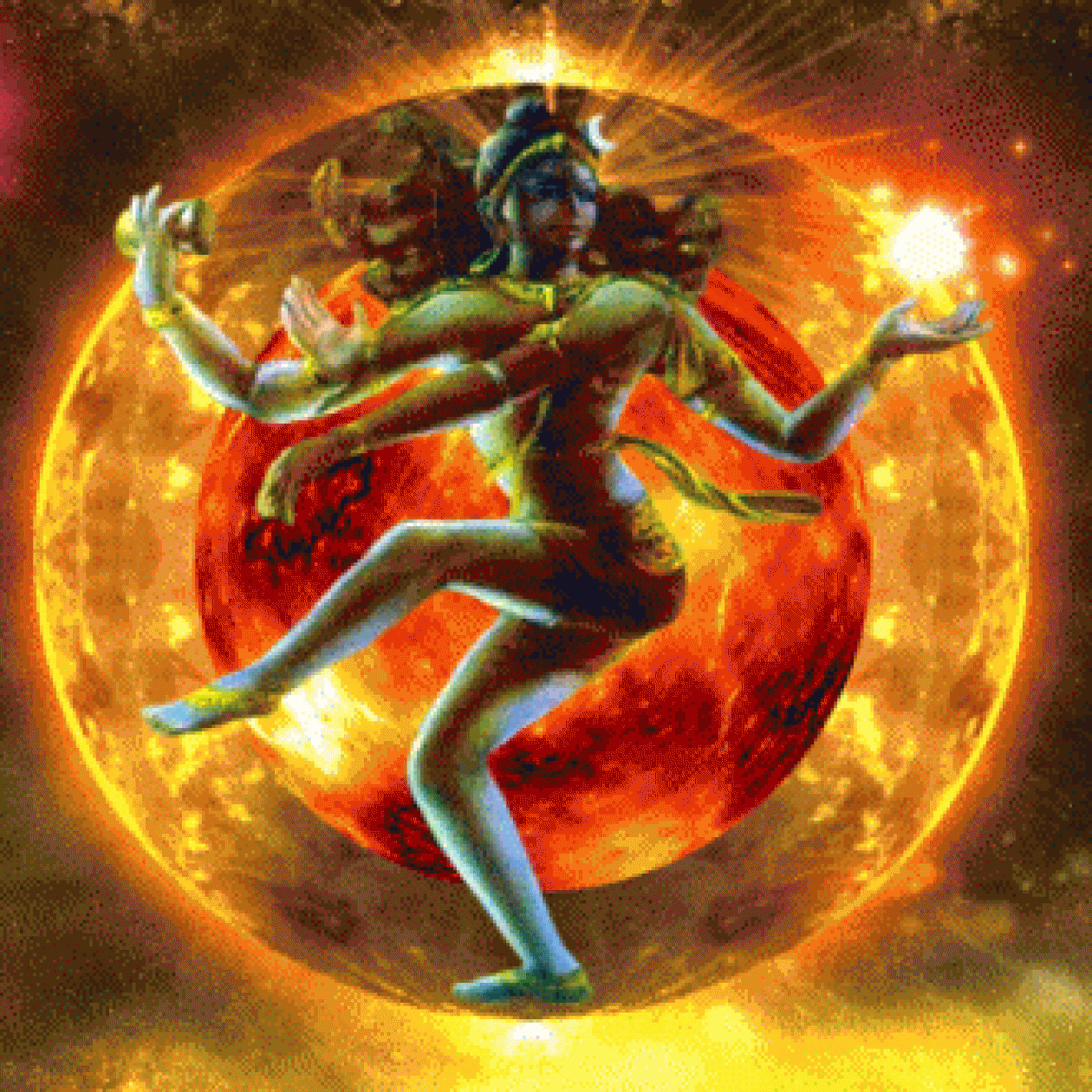Mahishmati ,ancient city-Madhya Pradesh,India

Mahishmati was an ancient city located in central India.
It is mentioned in several ancient texts, and may have flourished as late as until 13th century, as indicated by a Paramara inscription.
Mahishmati was the most important city in the southern part of the Avanti kingdom, and later served as the capital of the Anupa Kingdom. It was located in present-day Madhya Pradesh, on the banks of Narmada River, although its exact location is uncertain.
Identification
Although there are several references to Mahishmati in ancient Indian literature, its exact location is uncertain. The following things are known about Mahishmati’s location:
It was located on the banks of the Narmada river.
It was located to the south of Ujjayini, and north of Pratishthana, on the route connecting the two cities (according to Sutta Nipata). Patanjali mentions that a traveler starting out from Ujjayini saw the sunrise at Mahishmati.
It was located in the Avanti kingdom, and at times was a part of a separate kingdom near Avanti. It replaced Ujjayani as the kingdom’s capital for a brief period. It also served as the capital of the other kingdoms that separated from Avanti, such as Anupa.
Avanti was divided into two parts by the Vindhyas. Ujjayini was located in the northern part, while Mahishmati was located in the southern part.
Several cities in Madhya Pradesh, located along the Narmada river, are claimed to be the ancient Mahishmati. These include:
Mandhata or Omkareshwar
F. E. Pargiter, and G. C. Mendis, among others, identify Mahishmati with the Mandhata island (Omkareshwar).
According to Pargiter, the description of Mahishmati in Raghuvamsa makes it clear that it was located on an island. Moreover, Harivamsa states that the founder of Mahishmati was muchukunda, the son of King Mandhata.
A 1225 CE inscription of the Paramara king Devapala has been found at Mandhata. It records the grant of a village to Brahmins, and states that the grant was made while the king was staying at Mahishmati.
Maheshwar:
HD Sankalia, PN Bose and Francis Wilford, among others, identify Mahishmati with present-day Maheshwar.
Pargiter criticises this identification, stating that the Bramin priests of Maheshwar claimed their town as the ancient Mahishmati on basis of similar-sounding names, in order to glorify their town.
Other obsolete identifications
Writers such as Alexander Cunningham, John Faithfull Fleet and Girija Shankar Agrawal identified Mandla as the location of ancient Mahishmati. However, this view is no longer considered as accurate by the modern scholars.
B. Lewis Rice identified Mahishmati as a location in the former Mysore State (present-day Karnataka). His argument was based on Mahabharata, which states that Sahadeva crossed the Kaveri River on his way to Mahishmati. However, Kaveri is also the name of a different, smaller river, which is a tributary of Narmada.
Mentions in ancient literature
Sanskrit texts
The Sanskrit epic Ramayana mentions the attack of Rakshasa king Ravana on Mahishmati.
The Anushasana Parva states that Ikshvaku’s son Dashashva was a king of Mahishmati. It goes on to mention that the Haihaya king Kartavirya Arjuna ruled the entire earth from his capital Mahishmati (13:52).
He was killed by Bhargava Rama.
Mahabharata mentions Mahishmati as part of a kingdom distinct from the Avanti kingdom.
The Sabha Parva (2:30) states that the Pandava general Sahadeva attacked Mahishmati, and defeated its ruler Nila.[2] King Nila of Mahishmati is mentioned as a leader in the Kurukshetra War, rated by Bhishma as a Rathi. His coat of mail had blue colour (Mbh 5:19,167).
Harivamsha (33.1847) names the founder of Mahishmati as Mahishmant, a king who was the son of Sahanja and a descendant of Yadu through Haihaya. At another place, it names the city’s founder as Muchukunda, an ancestor of Rama.







